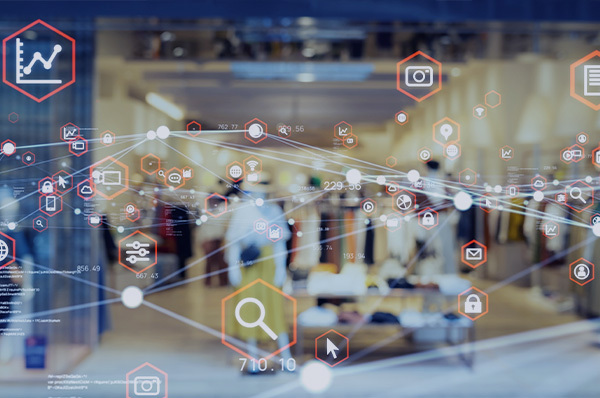Consumers have been returning to physical stores but also continue to buy online. Some are back at their place of work but remote work – either full or part-time – remains prevalent. Many consumers are now looking to save money through cutbacks or brand switching.
This backdrop has made it more difficult than ever to determine the trends that are meaningful and matter from those that are just hype – until now.
Below are five of the most important retail trends from 2022 and what they mean for the year ahead.
1. Rethinking Supply Chains and Logistics
The supply chain fallout of Covid-19, including shipping congestion making it hard to get hold of goods on time, has remained a key feature of retail in 2022.
Those who could afford to take matters into their own hands to alleviate the impact. In the case of brands like Amazon, Target, Walmart, and Costco this included chartering their own container ships in 2021.
But getting hold of stock isn’t the only challenge retailers have faced. Storing it is another. Many retailers were left with large quantities of unsold stock – and the costs associated with storing it – due to the coronavirus pandemic and changing customer buying behaviors. In a survey of US retailers by Coupa, 90% say they are experiencing excess inventory.
In an interview with WBUR, Boston’s National Public Radio station, Tony Bell, Assistant Professor of Professional Practice at Rutgers Business School, said of retailers, “why is it they’re so good at planning for economic uncertainty but not uncertainty in the supply chain?”
Retailers appear to recognize this. New global research from Capgemini has revealed that less than 20% of organizations feel equipped to handle disruptions in the global supply chain. An increasing focus by consumers on sustainability and supply chain transparency is adding another layer of complexity.
As a result, this year retailers have begun the hard work of rethinking and revamping their supply chains and logistics operations. This will continue into 2023 and beyond. Capgemini reported that over the next three years organizations, on average, plan to invest 17% more in supply chain transformation.
Technology like artificial intelligence (AI) is being increasingly explored to help with demand planning and inventory management. Walmart is one retailer who is already using AI in this way.
Meanwhile, Amazon Web Services has announced a new supply chain application to help customers make decisions based on real-time information. It believes this will help reduce risk and errors and lower costs.
Other retailers are making use of their physical network like Macy’s who has converted 1 million square feet of space across 35 of its stores into mini distribution centers. These semi-automated centers are helping the retailer to fulfill orders more quickly, but also free up space elsewhere to hold new products as they come in.
The big question all retailers need to be asking themselves right now is how can they get inventory to where it needs to be at the right time in the most efficient way. For many, this will require considerable investment but will pay off in the long run by giving them more flexibility to deal with changes in the future.
Ultimately, this results in the digital commerce trend of supply chain transformation, as businesses must adapt to the current market conditions and artificial intelligence is one of the most effective ways to do this.



.jpg?width=800&height=800&name=blog-jack-nrf-25%20(1).jpg)






